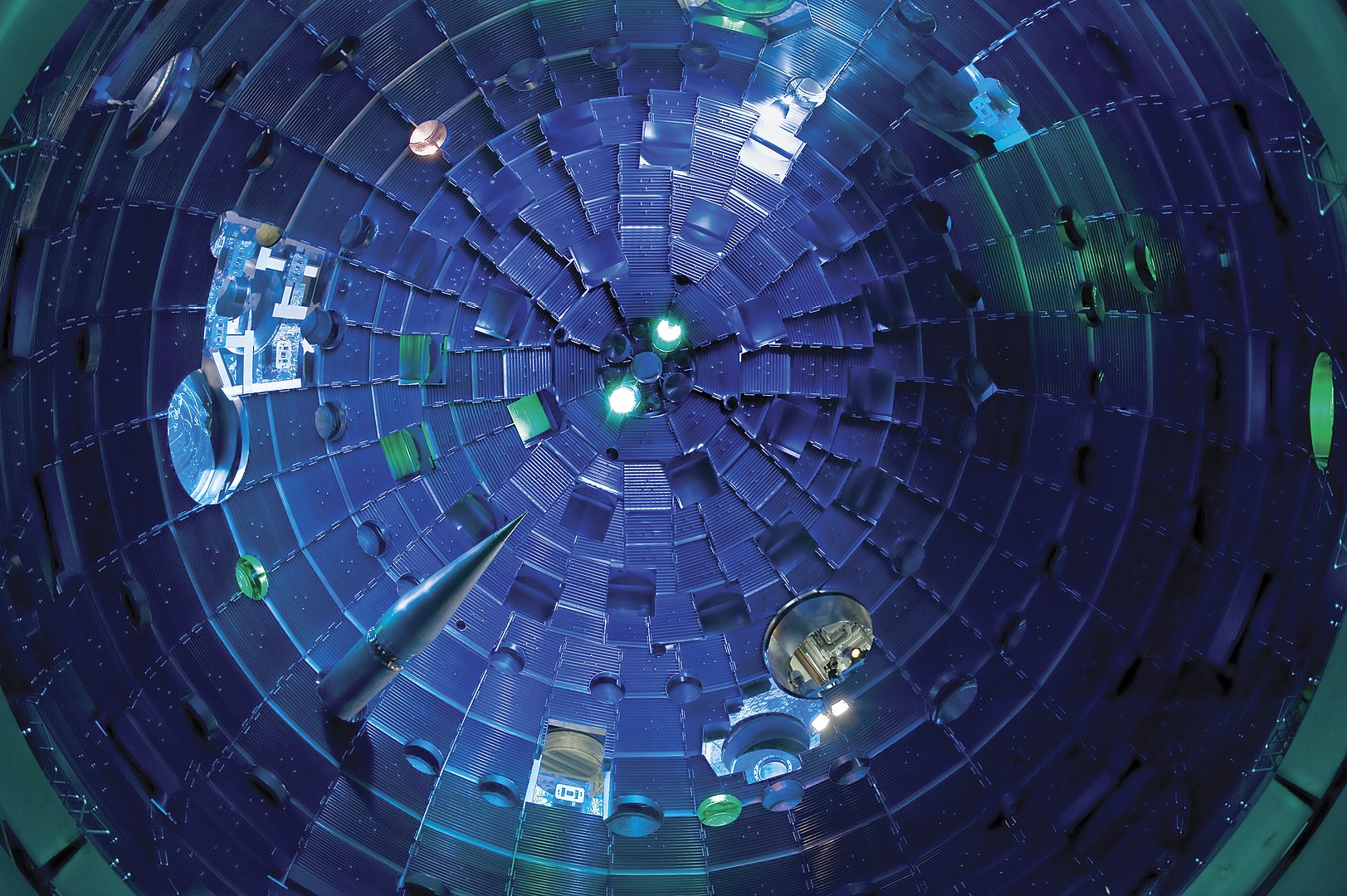Scientists at the National Ignition Facility (NIF) in California recently achieved something of a breakthrough in their pursuit of inertial confinement fusion. During an experiment on Aug. 8, researchers fired the facility's spread of lasers at a tiny blob of fusion fuel and produced a yield of 1.3 megajoules of energy, roughly 25 times more energy than was produced by the facility's world-record yield established in 2018. The recent experiment, which required 1.92 megajoules of energy input, "puts researchers at the threshold of fusion ignition," which is a cool way of saying that a self-sustaining fusion reaction is closer than ever. Wow!
Naturally you will take it as an insult, reader, to your knowledge and powers of recollection when I pause here to "mansplain" the particulars of inertial confinement fusion. Nevertheless I must offer a refresher for any "dunces" or "clods" who come to our mostly science-focused website for crude "sporting" content and are otherwise ignorant of the physics at play here. The NIF is a big impressive domed chamber with a bunch of lasers pointed in from the walls, and a retractable arm that positions a capsule called a hohlraum in the room's center. The hohlraum is genuinely bitchin' science: It's a solid gold thimble-sized cylinder containing a BB-sized frozen blob of foam soaked in fusion fuel, encased in literal diamond. Researchers slide the hohlraum into the chamber and fire 192 lasers at it; the be-lasered hohlraum emits x-rays which compress the fuel pellet to billions of atmospheres of pressure, generating unfathomable heat. The fuel is a cocktail of tritium and deuterium, two relatively abundant hydrogen isotopes that readily fuse into heavier elements under certain conditions, releasing the sweet, sweet megajoules that, once the process is self-sustaining, could in theory be converted into commercial energy, potentially an all-timer of a planet-saving scientific breakthrough.

So a 25-fold increase in power output is nothing to sneeze at! Clearly the science is leaping forward at a dizzying rate; 1.3 megajoules must be a terrifying, supernova-like blast of raw power capable of zapping one's enemies clean off the face of the Earth. You do not want to be standing in the wrong spot in the lab when a clumsy technician jostles the chamber and sends a stray bolt of 1.3 megajoules slicing through the facility like God's own chainsaw. 1.3 megajoules! Just hearing it said aloud strikes fear deep into the heart of all living things. This is too much raw power to put into the hands of mere humans!
Or perhaps not. Professor Jeremy Chittenden, co-director of the Centre for Inertial Fusion Studies at Imperial College London, told the BBC that "the pace of improvement in energy output has been rapid," and that "the megajoule of energy released in the experiment is indeed impressive in fusion terms," but what freezes my heart and releases my bowels and utterly crushes all dreams of a fast-approaching future of commercialized inertial confinement fusion, solving once and for all humankind's ruinous, all-consuming hunger for energy, is what Professor Chittenden has to say about 1.3 megajoules in raw terms: "In practice this is equivalent to the energy required to boil a kettle." Man, what?
Turns out one joule is in fact a very puny amount of energy, enough to power one standard 60-watt lightbulb for one measly second. A megajoule is one million joules, which may sound rad but according to math is only enough energy to power one standard 60-watt lightbulb for 11 days and some change. I don't mean to be rude to the extremely smart and dedicated scientists of the National Ignition Facility, but here is a video of a hamster powering a flashlight by running on a wheel, something that I am sure can be sustained for 11 days with some gentle encouragement and possibly a second hamster:
(Wednesday afternoon, Defector reached out to the Lawrence Livermore National Laboratory, which hosts the National Ignition Facility and all its lightbulb-almost-powering experiments, as well as multiple independent plasma and particle physicists, for insight into the raw flesh-rendering powers of 1.3 megajoules of fusion power, and we will update this post as we gain new information. For now, we are forced to interpret their continued silence on this matter as an admission that in fact 1.3 megajoules is baby shit.)
Debbie Callahan, a physicist at Lawrence Livermore National Laboratory, told the BBC that self-sustaining burning plasma is "essential to getting high yield," which I suppose hints at a possible future where inertial confinement fusion is able to, say, power a medium-sized microwave. On the other hand, while the NIF is for sure interested in fusion as a power source, its time is divided up between pure science and the maintenance of America's stockpile of nuclear weapons, on behalf of the National Nuclear Security Administration (NNSA). Jill Hruby, Department of Energy undersecretary for Nuclear Security, said the breakthrough results of the August shot "advance the science that NNSA depends on to modernize our nuclear weapons and production," which does not sound like something you or I should feel particularly pumped and jacked about. Scaling this sucker up in pursuit of the elusive breakeven necessary for commercialized fusion energy is not always the top priority. Besides, magnetic confinement fusion—our pal the tokamak—is capable of producing 140 megawatts of energy in ten second bursts, and I don't need to tell a sophisticated science-knower like you that 140 megawatts is 140 million joules per second. Math tells us that that's enough juice to power a 60-watt lightbulb for four-and-a-half years!
Still, we must offer our congratulations to the dedicated fusion researchers who successfully used 192 lasers plus gold and diamond and enough input energy to power a 60-watt lightbulb for two solid weeks to produce an energy reaction capable of powering a 60-watt lightbulb for not quite two weeks.






